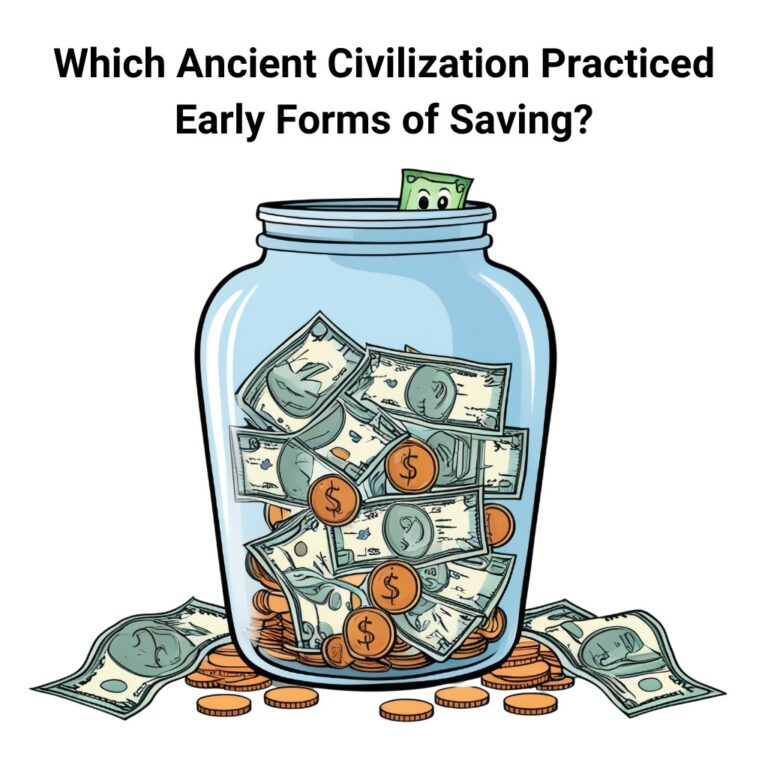A recent survey conducted by a trusted financial institution found that many Americans share concerns that keep them from donating to charity as much as they would like. In fact, the survey determined that as many as two-thirds of American donors would like to be more charitable when it comes to the causes that they care most about. Still, they have several concerns about charitable giving, making it challenging to give as much as they would like.
Some of the concerns that seem to get in the way of charitable giving for some Americans include how nonprofit organizations engage with them and an inability to organize or track their charitable giving properly. However, the survey found two key primary concerns among American donors. First, donors said that the ability to finance their charitable giving was a chief concern. Second, donors said that understanding their donations’ impact was also a major concern.
If this resonates with you and you are one of the three-quarters of American donors who said that the ability to finance their charitable giving was a major concern or one of the eight in ten people who say that understanding the impact of their donations was a concern, read on. This article will outline seven ways, based on these common concerns, that can help you improve your charitable giving, no matter what charity you choose to support or how much you’re comfortable contributing.
Seven Ways to Improve Your Charitable Giving
#1 Use automatic giving to reach your personal goals
Like most donors, you probably know exactly how much money you would like to provide annually. Once you know how much you would like to donate annually, you might find it useful to set up pre-scheduled donations at different times throughout the year to reach your goals.
Many Americans use automatic payments to pay some of their household bills. When you do the same for donating to charity, you are more likely to donate the amount you have committed to giving, which will help you balance your overall budget better.
Nowadays, it’s easier than ever to set up an automatic donation plan for donating to charity using your debit or credit card. Your employer may even be able to help you manage your charitable contributions through regular payroll deductions. Best of all, you won’t be scrambling to make your financial contributions once a year.

#2 Consider a contribution of appreciated assets instead of cash
Half of the survey respondents noted that they would be more likely in donating to charity if additional tax benefits were added. Unfortunately, many charitable donors are not taking advantage of all available tax deductions.
One great way to contribute to charities while leaving your cash in place is by donating appreciated assets, such as stocks, directly to the charity of your choice. When you do so, you might be able to avoid capital gains tax on the stock appreciation. So, you can increase your charitable donation while decreasing tax exposure.
When it comes to charitable giving or donating to charity, donors can make a larger impact when they donate long-term appreciated securities, such as stocks, bonds, or mutual funds, directly to the charity. When compared with cash donations or selling appreciated securities to make contributions from after-tax proceeds, this method of giving increases your gifting potential and overall tax deduction.
Donating long-term appreciated securities to your favorite charity is easy. When donating stock, bonds, or mutual funds to a charity, you are generally entitled to a tax deduction based on the stock’s full fair market value. Because it is a stock donation, your contribution and deduction could increase by as much as twenty percent.
Charitable donors have also increasingly turned to donor-advised funds to donate appreciated assets to their charity of choice. Donor-advised funds are charitable giving vehicles sponsored by public charities that have experience converting appreciated assets to charitable donations. With donor-advised funds, you can donate the proceeds to one charity or divide the proceeds among different charities. Contributing appreciated securities to donor-advised funds offers immediate tax benefits.
This podcast from Money with Mak and G will teach you how donating money to your favorite cause can help make a positive impact on something we value.
Donor-advised funds are a flexible, simple, tax-advantageous way of donating to charity. Think of it as a charitable investment account with the primary purpose of offering support to those charities you care about.
You are usually eligible for immediate tax deductions when you contribute to a donor-advised fund through a public charity. Those donations can then be used to invest in tax-free growth, allowing you to make grant recommendations to any IRS-qualified public charity.
Most Americans want to maximize the effectiveness of their charitable donations. Donor-advised funds have become one of the most popular fast-growing vehicles in the US because they are easy and tax-advantageous.
- Make tax-deductible donations: Once you establish an account and donate stocks, cash, or non-publicly traded assets like cryptocurrency, private stock, or private business interests, you will be eligible for immediate tax deductions. Contributions to donor-advised funds are an irrevocable charitable commitment which means that fund may not be returned to a donor, to another individual, or used for any other purpose.
- Grow your charitable donation tax-free: You can grow your charitable donation while deciding which charitable organizations to support, which means you’ll have more money to give. Most donor-advised fund sponsors offer a range of investment options and can recommend various investment strategies to maximize your charitable gifts.
- Immediately support your favorite charities or support them over time: A donor-advised fund allows you to support the charities you care about at a pace comfortable for you. From your alma mater and favorite religious institution to your local homeless or animal shelter, grant recommendations from your donor-advised fund allow you to support nearly any IRS-qualified public charity. Your account sponsor will conduct its due diligence, ensuring that all funds granted will go to IRS-qualified public charities and be used exclusively for charitable purposes.

#3 Get in Touch with a Financial Planner
An essential component of donating to charity is understanding what you can afford. That can be a challenge. Four in ten donors say they were conflicted over whether to save their money for themselves or donate their money to charity.
A financial advisor or financial planner can help identify and develop a plan to reach your charitable goals as part of your overall financial plan. Financial advisors can also help identify tax-saving plans that you may not be aware of.
#4 Write a Giving Mission Statement for Better Focus
Nearly 53 percent of survey respondents said they felt bombarded by charity requests, further complicating their decisions around donating to charity. The survey also found that 45 percent of Americans felt burdened by family and friends who pressured them into donating to charitable organizations that were personal to them.
When you create a mission statement for giving, you’ll be better able to focus on the issues that matter most to you. A giving mission statement is a great way to permit yourself to say “no” to other charitable causes that might be worthy but do not necessarily align with your priorities or values.
Also, by focusing your efforts on a giving mission statement, you have a better chance of maximizing the impact of your donations.
#5: Learn how your favorite charitable organizations operate
Nearly two-thirds of donors say they are sometimes unsure about determining a charity’s trustworthiness. Sometimes, all it takes is a bit of research to figure out how your charitable gifts are used.
If you can’t find this information in the newsletters, emails, and other correspondence from the charitable organization you support, don’t hesitate to contact them directly. Many great charity research tools, including Charity Navigator and GuideStar, publish reports and pertinent information about charitable nonprofits.
The more confidence you can have in the charitable organization, the more secure you feel that your gift makes a difference.

#6 Utilize Giving Guides to Find The Best Charities
There are many impact guides from organizations like the Center of High Impact Philanthropy, which, for example, offers reports based on charitable categories (poverty, education, global health, etc.), summarizes individual programs, and outlines the impact and efficiency of charitable organizations. You can even follow some of the most respected foundations to track where their contribution funds go.
#7 Make Charitable Giving a Family Affair
Here at Educounting, we are all about getting the whole family, especially kids, involved in financial matters, including family charitable giving. When you involve the entire family in your charitable gift-giving and charitable gift-giving ideas, you can have a deeper impact now as well as in the future, and even increase your charitable giving.
A great way to get the whole family into the spirit of giving is to set up donation jars in the house. Donation jars are a great way to set an example for your children and encourage them to participate in donating to charity. A portion of allowances, gift money, and spare change can add up fast and impact your family’s charitable giving.
Be sure to set aside some time to discuss your children’s ideas about which charitable organizations they would like to support. You can get them thinking about what charitable organizations they might want to help by discussing their values, events, and priorities. Such conversations also open the door to discussing other ways that your family might be able to give to charities, like volunteering.
Strategies for Giving More to the Charities You Care Most About
If you are ready to make charitable donations to the organizations and causes that matter to you the most easier and more effective, the best thing you can do is rid yourself of the ad hoc style of giving and create a proper charitable giving plan. When you find new sources of funds, learn how to plan, or better understand the impact your donations have, you will ultimately do much more good for those you care about most.
Consider the following checklist of strategies for more effective charitable giving, helping you reach the rich, fulfilling experience you’ve been looking for.
Make Your Charitable Giving an Intentional Practice
- Make a household or family financial plan with charitable giving as a specific line item in your budget: When charitable giving is an integral part of your budget, you will no longer need to pull funds for your gifts from other line items in your household budget.
- Automate your charitable giving: Rather than making a charitable contribution in one lump sum at the end of the year, which is a time that you are more likely to feel already as if your budget is being spread thin, you should consider making regular donations to specific charities through debit or credit card payments. Automating the charitable giving process, like paying your bills, can make it more routine and keep you on track with your giving goals.
- Increase your giving annually: When you gradually increase your giving by a percentage or incremental amount yearly for donating to charity, you have an opportunity to provide more over time.
- Incorporate giving into your everyday life: This is especially useful for families with younger children who are still being taught about finance Creating a donation jar where family members can contribute cash toward charitable gifts is a great way to get kids involved and let them watch their donations add up.
Realize and Take Advantage of Available Tax Benefits
- Remember that donating cash is not the only way that you can give: Giving other types of assets such as stocks, bonds, and mutual funds offers the potential to give more and realize significant tax benefits.
- Talk to a financial advisor about different charitable giving options: Using a deferred charitable approach can allow you to invest charitable contributions to realize tax-free growth or generate income streams for donors. Charitable contributions for donating to charity as part of your will are a great way to ensure that you meet your long-term gift-giving goals.
Create a Charitable Giving Plan to Better Understand the Impact You Have
- Mission statements are a great way to remain focused on your charitable giving: You can focus more on the causes that matter most to you when you write a few paragraphs about your charitable giving goals. You can then use that charitable giving statement to help you either decline or limit support for organizations or causes that do not align with your priorities and goals.
- Come up with concrete steps that you can take to meet your goals: By setting up quarterly reminders to regularly revisit your plan, you can check on your charitable giving progress along the way.

Know & Engage with the Nonprofits You Support
- Research tools are available to help you learn even more about the organizations you currently support or are considering supporting: These tools can provide you with crucial information about the nonprofit’s financial well-being and include data about programs and results.
- Engage with nonprofits directly for more information: A charity’s website is usually the best source for information about its programs and their stability. However, you can email or call these charitable organizations directly. The charitable organization’s development office is usually the best place to start if you want to speak to someone directly. If you don’t currently have any specific questions, consider the following:
- What is your organization’s most successful program, and why?
- Can you cite examples of how your organization’s work has made a difference?
- Does your organization have a strategic plan, and what are the key things the organization wishes to accomplish?
- Is there anything you wish more people could know about your organization or issues that matter most to you?
- Where does the majority of your organization’s funding come from?
- How much of your budget comes from private donations?
- What do private donations help cover that other funding sources don’t?
- What are some of your organization’s most urgent needs?
- What are some of the best ways to learn more about your organization?
- What do you do to keep supporters up to date about the work that your organization does?
You Don’t Have to Approach Charitable Giving on Your Own
Figure out how other donors are approaching the causes that matter most to you: Resources like the GrantCraft database are a great way to learn how foundations and their donors are making an impact. To make an impact on a local level, look into organizations funded by local networks and foundations and simply follow their lead.
Create or join a donor network: Giving circles and donor networks are great ways to discover more information about charities and causes, share insight about specific organizations, and pool money with others to increase impact. These sorts of groups may exist in your area; if not, you can always start your own.
Volunteer with organizations that matter to you: Volunteer with the organizations you donate to or are considering donating to. It is a great way to get to know them better and better understand the impact the organization has on those it serves. It’s also great to connect with others who care about the same issues and topics as you.









